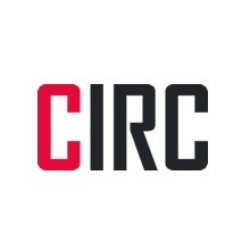

















How did contemporary Mexican artist Julio Galán (b. 1958-d. 2006) engage with lo popular in his artwork, and with what purpose? Galán excelled at post-modern collage, looking to some of the same objects and past cultural and artistic expressions as the Mexican modernists who preceded him by a half-century; through the lens of artifice, he layered fragments from a variety of textual and visual sources, reorienting the language of lo popular as gender-expansive and culturally inclusive. Through self-portraiture, he addressed in his artwork the performance and construction of gendered identity. This analysis draws on the study of scholars Susan Sontag, Francisco de la Maza, and Gerardo Mosquera of the language of “low” art; formal analysis of a select group of Galán’s paintings and sculpture further reveals the variety of sources within lo popular for his imagery, and his Camp-Cursi- Kitsch approach.
Books and articles
Botkin, B.A. “An Anthology of Lizzie Labels.” American Speech 7, no. 1 (October 1931): 32-39.
Cherem, Silvia. “Los secretos del dolor: Entrevista con Julio Galán.” In Julio Galán: pensando en ti, 300-310. Monterrey, Museo de Arte Contemporáneo de Monterrey, 2007.
Costantino, Roselyn. “Politics and Culture in a Diva’s Diversion: The Body of Astrid Hadad in Performance.” In Holy Terrors: Latin American Women Perform, edited by Diana Taylor and Costantino. 191-194. Durham and London: Duke University Press, 2003.
Dao, Alana. “‘Yo seré tormenta y amor’: Mexican Female Iconography and Their Social Repercussions as Seen in the Work of Julio Galán.” Unpublished paper for Dr. Dana Leibsohn. North Hampton: Smith College, 2008.
De la Maza, Francisco. “Notas sobre lo cursi.” Anales del Instituto de Investigaciones Estéticas X, no. 39 (1970): 33-50.
Del Conde, Teresa. "Las jóvenes generaciones de pintores mexicanos." México en el Arte no. 9 (1985): 32-42.
Del Conde, Teresa. “Julio Galán.” In Julio Galán: Obras 1983/1997, 11-15. Buenos Aires: Fundación PROA, 1997.
Eckmann, Teresa. Neo-Mexicanism: Mexican Figurative Painting and Patronage in the 1980s. Albuquerque: University of New Mexico Press, 2011.
Eckmann, Teresa. “Julio Galán and the Type: Fashioning a ‘Border’ Aesthetic.” In Visual Typologies from the Early Modern to the Contemporary: Local Contexts and Global Practices, edited by Tara Zanardi and Lynda Klich, 277-290. New York and Abingdon: Routledge Press, 2019.
Eisler, Colin. “The Strange World of Julio Galán.” Interview Magazine XIX, no. 3 (1989): 52-57.
Elizalde, Lydia. “Ficción en la plástica de Julio Galán.” In Ensayos historia y teoría del arte 14, 23-40. Bogotá: Universidad Nacional de Colombia, 2008.
Gillespie, Jeanne L. “The Case of the China Poblana.” In Bueno and Terry Caesar. Imagination Beyond Nation, edited by Eva P.19-40. Pittsburgh: University of Pittsburgh Press, 1998.
Herrera, Hayden. “Frida Kahlo’s Legacy: The Poetics of Self.” In Frida Kahlo, edited by Elizabeth Carpenter, 56-79. Minneapolis: Walker Art Center, 2007.
Klaster, Jan Bart. “Riddles of a Storyteller.” In Julio Galán, n.p. Amsterdam: Galerie Barbara Farber, 1992.
Klich, Lynda. “Circulating lo mexicano in Mauricio Yáñez’s Postcards.” In Visual Typologies from the Early Modern to the Contemporary: Local Contexts and Global Practices, edited by Tara Zanardi and Lynda Klich,150-165. New York and Abingdon: Routledge Taylor and Francis, 2019.
Mosquera, Gerardo. “Bad Taste in Good Form.” Social Text, no. 15 (Autumn, 1986): 54-64.
Murillo, Gerardo. Las artes populares en México. Mexico City: Instituto Nacional Indigenista, 1980.
Museo Soumaya. La Patria Portátil: 100 Years of Mexican Chromos Art Calendars. Mexico City: Asociación Carso, 1999.
Pellizzi, Francesco. “On the Border.” In Julio Galán, n.p. New York: Annina Nosei Gallery, 1989.
Pérez Montfort, Ricardo. “On the Street Corner Where Stereotypes Are Born: Mexico City, 1940-1968.” In William H. Beezley, ed. A Companion to Mexican History and Culture, 34-53. Hoboken: Wiley-Blackwell, 2011.
Rodriguez Prampolini, Ida. “Recovery of Memory.” In Julio Galán, 334-343. Mexico City: Grupo Financiero Serfín, 1993.
Schneider, Luis Mario. “Julio Galán in the Enchantment of His Universe: An Interview with Luis Mario Schneider.” In Julio Galán, 323-330. Mexico City: Grupo Financiero Serfín, 1993.
Sims, Lowery. “Julio Galán: ‘Los mágicos son transportados por los aires con un movimiento Rápido.” In Julio Galán, n.p. Monterrey: Museo de Monterrey, 1988.
Solomon, Robert. “On Kitsch and sentimentality.” Journal of Aesthetics and Art Criticism no. 49 (Winter 1991): 1-14.
Sontag, Susan. “Notes on ‘Camp’.” In Against Interpretation and Other Essays, 275-292. New York: Noonday Press, 1966.
Sullivan, Edward J. “Julio Galán.” In Aspects of Contemporary Mexican Painting, 59-66. New York: Americas Society, 1990.
Taylor, Diana. Performance. Durham: Duke University Press, 2016.